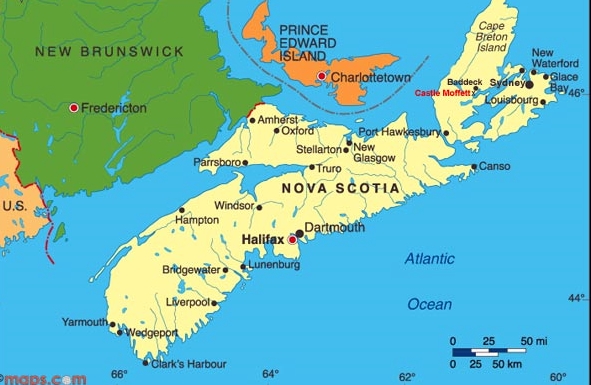Colaisde na Gàidhlig
Thursday, July 13, 2017
We are really in New Scotland (Nova Scotia) now. Cape Breton Island is truly where Scottish history and culture come alive, and the history goes back a long way. In 1746 the Scots were defeated by the English at the Battle of Culloden in Scotland. As a result, Scottish language, culture and dress were prohibited, and many Scots left for a better world. That they found here on Cape Breton Island. The ties to Scotland remain and are very deep, and this is truly New Scotland.
We began our day early, taking the ferry from southern Prince Edward Island to the north of mainland Nova Scotia, and then drove to Cape Breton Island.
We stopped at a unique place, the Gaelic College (Colaisde na Gàidhlig). This is a campus for the study of all things Gaelic, from language to music (including bagpipe) to dance to literature. They run week-long programs, some for children, some for families and some for adults, and also advocate for inclusion of Gaelic in public life.
The young woman who showed us around began the study of Scottish Gaelic in the fourth grade and studied it every year until graduation. The re-introduction of the Gaelic language has had the odd effect of leaving out her parents’ generation. Her grandparents had Gaelic as their first language, but, like many, were going to make their children fit in, and so they grew up speaking English and only hearing Gaelic when the parents didn’t want them to understand. Now the grandchildren speak Gaelic, the parents don’t, and the children use it when they don’t want the parents to understand! Even roadsigns are now being introduced in Scottish Gaelic.
We had a lecture/demonstration about kilts (with the requisite dressing of one of our group):
We heard about a cooperative activity called a “milling frolic” in which groups of women sat around a table with a wet cloth made of freshly loomed long strips sewn in a giant circle. They rubbed the cloth on a rough surface to process it before sewing it into clothes, and sang. The process took hours, well into the night. (click the arrow):
We learned about the six Celtic languages (Scottish Gaelic, Irish Gaelic, Manx, Breton, Welsh and Cornish) and learned that Scottish Gaelic is quite distinct from each of the others. It’s Scottish Gaelic which is taught here. We learned about the music, from strathspey to march to reel to jig, and heard samples of each. Here’s a reel (in 4/4 time, different from a jig which is in ¾ time). Click the arrow:
We saw a short example of step dancing. All in all, a great immersion into Scottish culture which seems to be as strong here as it is in Scotland!
We then finished our drive to the Keltic Lodge where we’ll spend the next three nights on the far northeast corner of Cape Breton island. We’re about where the “d” is in the word Island on the map above.
Finally, Cape Breton needs people. They’ve had a population exodus, and some may remember that when Donald Trump won the Republican nomination for president, creating much angst among some Americans, a web site went up with the title “Cape Breton if Donald Trump Wins”. It created substantial interest—so much so that the server hosting the site went down a number of times. You can see it here: http://cbiftrumpwins.com/#intro
Tomorrow nature hikes and cooking demonstrations at the lodge.








Never realized that a reel was in 4/4! I love that guy's playing: there are a lot of very brief notes and decorations in there, even though it mainly sounds as if it's just a simple tune. The women's work song is great!
ReplyDelete